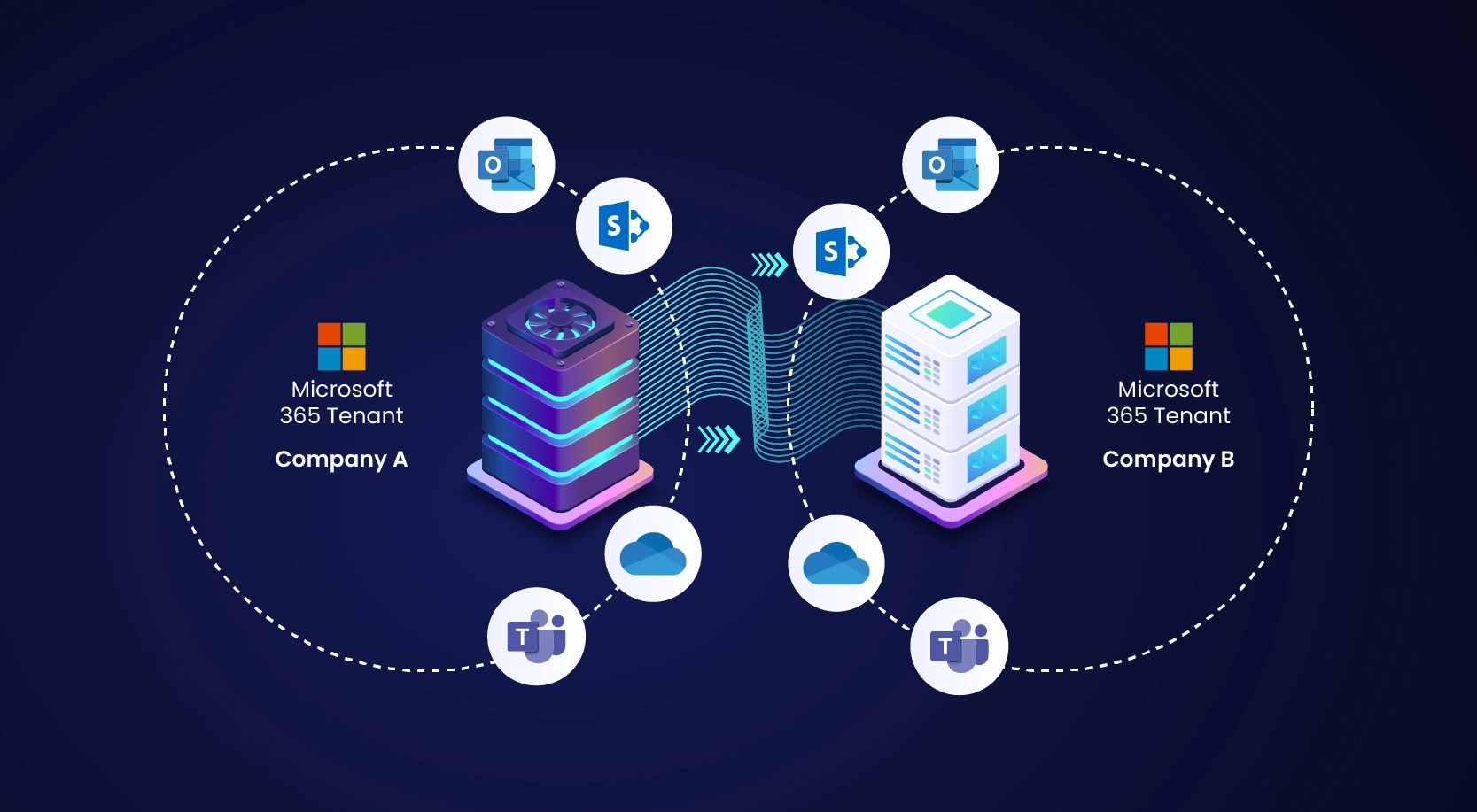
Cloud migration is a key step for companies looking to transform digitally. By moving their data and applications to the cloud, businesses can tap into new growth opportunities and position themselves well for future advancements. This transition is not just about adopting new technology—it marks the beginning of a new chapter in how businesses operate. In this new era, artificial intelligence (AI) has become a crucial tool. Leveraging AI, companies can automate processes, enhance decision-making, and deliver better customer experiences. Essentially, cloud migration strategies sets the stage for innovative changes that can redefine the competitive landscape.
McKinsey’s research reveals that cloud migration can significantly slash IT overhead costs—potentially by 30-40%. This helps reduce spend on in-house infrastructure, improve resiliency and application performance thereby providing reassurance of the benefits.
Cloud migration helps with cost savings, especially in the current economic situation. The cloud’s flexibility allows businesses to change their resource usage based on actual demand, avoiding costs on over provisioning IT infrastructure. Additionally, resource allocation can be changed dynamically, making sure that computational power and storage are used effectively.
Cloud migration significantly enhances a company’s ability to leverage artificial intelligence (AI). By moving to the cloud, businesses can easily access AI services and tools, allowing them to develop intelligent applications rapidly. This transition empowers clients to harness the full potential of AI without the need for upfront investments in infrastructure. Companies can start utilizing advanced AI capabilities to analyze vast amounts of data, gain actionable insights, and improve decision-making processes.
Additionally, the cloud environment facilitates the scalability of AI solutions, enabling businesses to adapt quickly as their needs evolve. This seamless integration of cloud and AI fuels innovation and ensures that businesses are well-prepared to meet the challenges of today’s dynamic market conditions.
Cloud migration is a feasible and flexible approach for organizations aiming to pursue digital transformation. By quickly moving workloads to cloud infrastructure as a service (IaaS)—with few changes—organizations can switch from capital expense (CAPEX) to operational expense (OPEX), acquiring more agility and efficiency in the process.
Many organizations have successfully adopted cloud integration and have shown how cloud solutions can enable digital transformation. Their stories are inspiring examples for other organizations that want to change with the cloud.
However, cloud migration and modernization journeys are not the same for everyone. Those who want to switch from their old systems to cloud solutions can choose from several options, each with its own pros and cons for different situations.
Factors to Consider Before Cloud Migration
When planning a migration, it’s important to think about many factors, with these being the main ones:
- Impact Analysis: Assess how cloud migration will affect your operations. Ensure dependable support and flexible services to minimize disruptions.
- Align Cloud Benefits with Business Goals: Ensure the cloud migration aligns with specific business needs, enhancing performance, interoperability, and remote collaboration. Evaluate how cloud services can improve information sharing and streamline operations.
- Realistic Planning: Accurately estimate migration costs, timelines, and resource allocation. Know how financial and operational factors affect your sector and make sure your cloud provider’s solutions match your business needs.
- Hardware Lifecycle Alignment: Plan cloud migration to match your hardware’s lifecycle. Migrate at the right time to save money, especially if your hardware is almost outdated.
- Prioritize Migration Resiliency: To ensure business continuity, establish strong security measures and a cloud resiliency plan upfront. This should include a zero-trust approach, detailed recovery plans, and reliable backup systems to minimize potential failures.
- Establish a Robust Security Framework: Implement comprehensive security measures to protect your cloud setup. This includes policy-based authentication, zero-trust security, strict server protection policies, advanced firewalls, data encryption, and real-time threat monitoring to safeguard against cyber threats.
- Data Security and Governance: Prioritize the security and tracking of sensitive data. Align your cloud security measures with application needs and regulatory requirements to ensure data is protected, accessible, and compliant.
- Post-Migration Tasks: Moving to a new environment means keeping data secure and managing governance. Important tasks after migration are checking data quality, managing access rights, backing up data well, and meeting security standards.
- Cultural Transformation: Recognize that adopting cloud technology is not only a technological shift but also a cultural one. Prepare your team by developing new skills and adjusting company culture to leverage cloud benefits fully.
7 Cloud Migration Strategies
WinWire’s “modernize while migrate” approach enriches the traditional 6 Rs of Application Modernization. Organizations can enhance efficiency and capitalize on cloud functionalities sooner by focusing on modernization during the migration process. This strategy minimizes disruption and maximizes value by ensuring that every step towards cloud adoption also entails an upgrade in system capabilities, aligning technological improvements directly with strategic business outcomes.
- Rehost: Simply lift and shift applications to Azure, which offers a more efficient and scalable environment with minimal changes to the applications
- Re-platform: Move applications to the cloud with slight modifications to take advantage of Azure’s enhanced capabilities, ensuring a more efficient and scalable environment without a complete redesign.
- Repurchase: Opt for a new software solution or a software-as-a-service platform to leverage modern cloud capabilities and streamline operations.
- Refactor/Re-architect: Revamp the application’s architecture significantly to fully exploit Azure’s cloud native capabilities, such as scalability and flexibility.
- Retire: Decommission outdated IT assets to reduce costs and complexity, benefiting from Azure’s management tools.
- Retain: Maintain specific applications as-is when they meet current needs or are not yet ready for migration, continuously assessing their role in the overall IT strategy.
These steps integrate the goal of modernization alongside migration, ensuring that each phase contributes to a more agile and cost-effective IT infrastructure.
WinWire’s Cloud Migration Approach for a Successful Cloud Migration
WinWire is on the cusp of such transformations, ensuring that a disciplined, lean approach is applied to cloud adoption. This strategy ensures that operations are run consistently and maximizes the return on investment. We help organizations plan their cloud migration by collaborating with their business and technology stakeholders to set the new system’s boundaries, timeframe, and resources. This enables organizations to make a plan that aligns with their business goals and guarantees quick and easy migration.

- Strategic Planning and Assessment
Planning and Evaluation from the get-go, WinWire thoroughly analyzes your current estate and business objectives for its cloud journey. Based on this analysis, WinWire helps build strategic plans and roadmaps for cloud migration to drive specific business outcomes, minimize risks, and set a strong foundation for a seamless transition to the cloud.
- Creating the Landing Zone
A critical step in successful migration involves setting up the cloud environment—or “landing zone.” WinWire can help establish an infrastructure that is reliable, scalable, secure to host workloads, and meets regulatory and compliance based on industry standards. This work sets up very well for the subsequent migration/modernization phases.
- Iterative Migration and Modernization
Through staged migration, WinWire helps you safely and progressively migrate and modernize your systems and applications. This minimizes downtime and ensures that associated business processes are modernized seamlessly throughout the migration process’s lifecycle.
- Governance and Optimization
WinWire uses a governance model that improves the cloud’s cost, performance, and security operations after migration. This model ensures ongoing compliance with both organizational standards and regulatory requirements, significantly boosting operational efficiency over time.
Bring Transformational Change with WinWire’s Accelerator for Cloud Migration

WinWire has successfully guided numerous organizations on their transformative cloud migration journeys. Discover our cloud migration success stories.
Why Choose WinWire as Your Strategic Cloud Partner?
We have a successful history guiding seamless cloud transitions from planning to implementation. With our leadership and expertise in cloud transformation, we offer a comprehensive range of cloud services, from design to migration and management to optimization. Our approach is tailored to your business—making it more flexible and operationally effective. Partnering with WinWire is a strategic move—to reinforce your technology and drive substantial business growth.
WinWire’s structured cloud migration helps businesses use the full power of cloud technologies. We transform your business to match your goals and don’t miss any details. Our complete assessment—strategic planning—controlled migration—and thorough optimization improve efficiency and innovation. WinWire makes sure your cloud migration is well done.
Begin Your Cloud Migration Journey Today. Contact Us.






